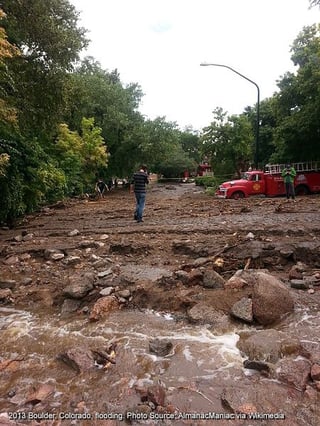Earlier this week, I wrote about Goldfish Underwriting and referred to this Brink article (thanks again to authors Carolyn Kousky and Erwann Michel-Kerjan) to describe how flood risk varies within NFIP A zones. The Brink article summarizes a study of NFIP claims over the past 35 years. At first I thought it would be a standard-issue, “NFIP-is-broken” article, but it is completely different from anything else I’ve read about NFIP losses, and the authors' four conclusions are each worth a look.
- Conclusion #1: Damages are often modest (less than 10 percent of the building value), but they can be catastrophic.
This is one of the defining characteristics of flood as a peril – not many cat perils can cause damages that start at minimal and extend to full building replacement costs. It’s a good thing that flood risk assessment analytics can handle that aspect of the peril, too. The amount of damage is highly correlated to the depth of the flooding (the velocity of the water is also a factor), and by the very nature of how flood is modeled, those depths are absolutely available. - Conclusion #2: Claims are increasing through time but spread broadly through space.

What the authors mean by “through space” is “across the whole country”, and they are right. Flood claims do have a tendency to cluster in certain parts of the country (thus the massive accumulation issue that the NFIP has to deal with), but there is no state or place that is immune to flooding. This fact supports the case for a homeowner’s policy to include flood as a standard peril, not to mention the importance of not liming flood risk analytics to flood zones. - Conclusion #3: The claim rate is not statistically different inside and outside the 100-year floodplain.
This conclusion is very much related to #2: flood risk (and claims) are spread everywhere, and they do not pay attention to flood zone boundaries (or ZIP codes). This is another reason for flood insurance and analytics to cover everywhere, and not just flood zones. - Conclusion #4: The adoption of risk-reduction measures will reduce your flood loss.
The fact that flood resiliency and protection reduces risks should be obvious, and it is hardly controversial. Resiliency is not only an aim of the NFIP, but well known players in the global insurance market (one example is Swiss Re, who takes resiliency very seriously). Commercial and industrial underwriters need to consider resiliency on every submission – as the risks get bigger, it gets more important.
The Kousky/Michel-Kerjan article is excellent validation for the approach many carriers and underwriters are now taking toward flood insurance. As this level of awareness spreads, good things can happen: the protection gap can be filled, flood insurance can become more affordable for more property owners, and insurers can grow the profitability of their flood books of business.

